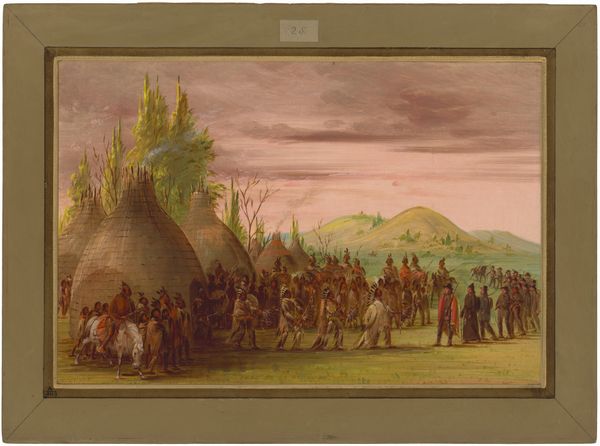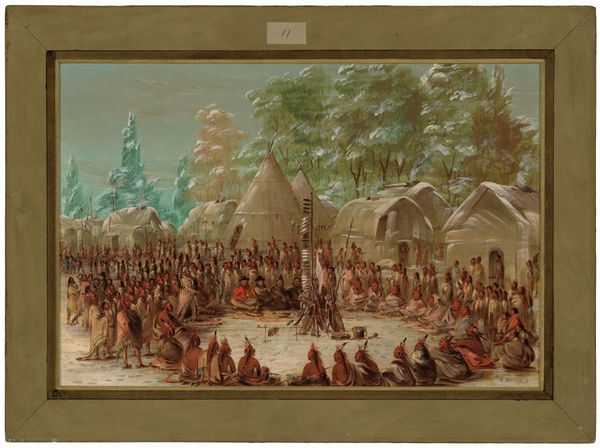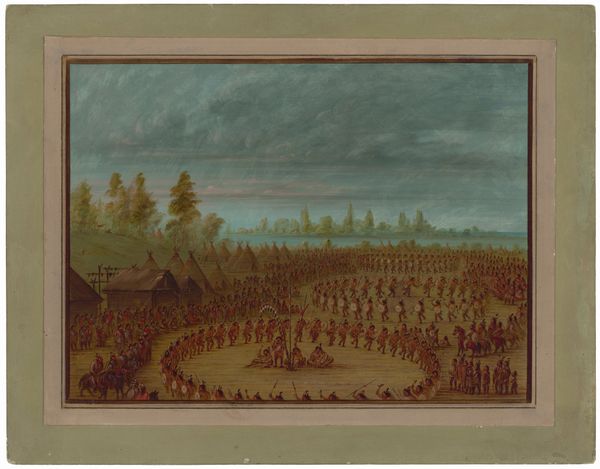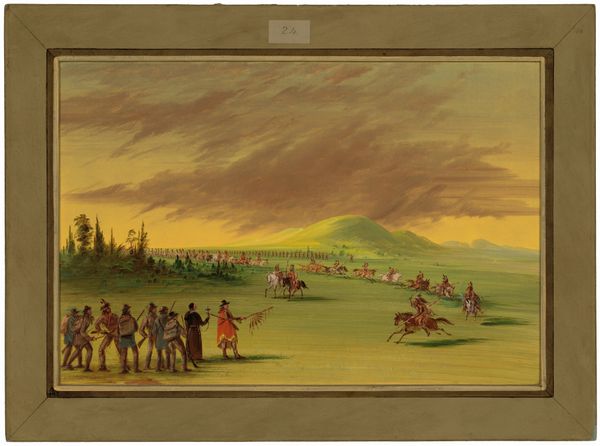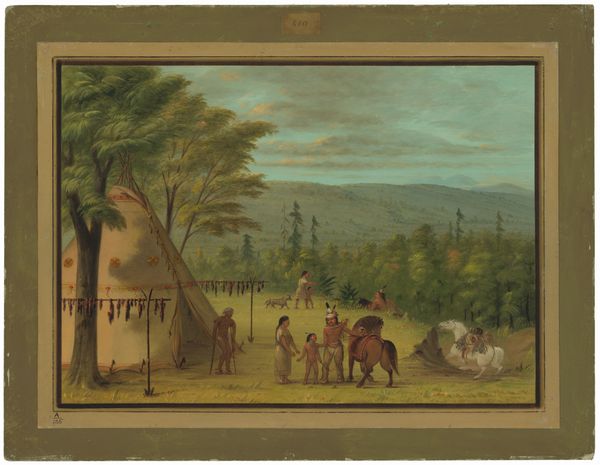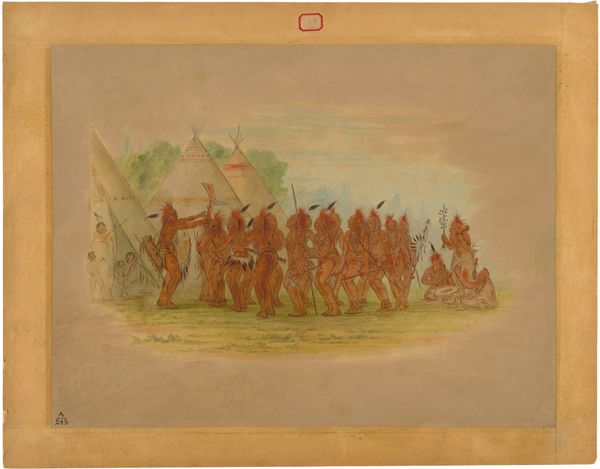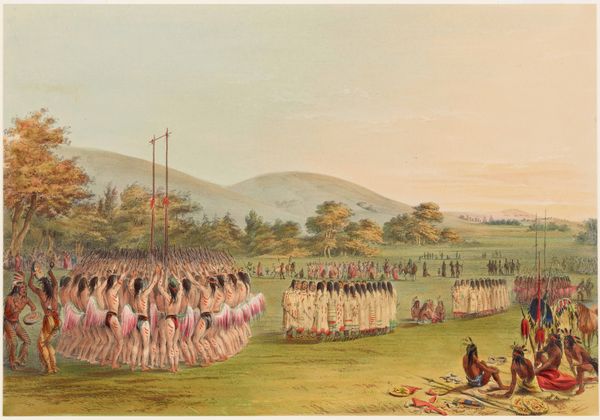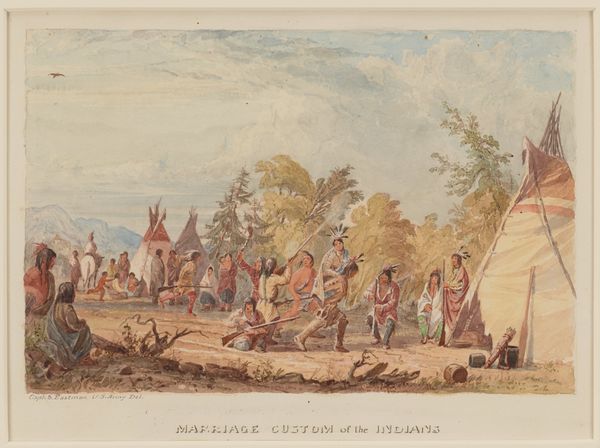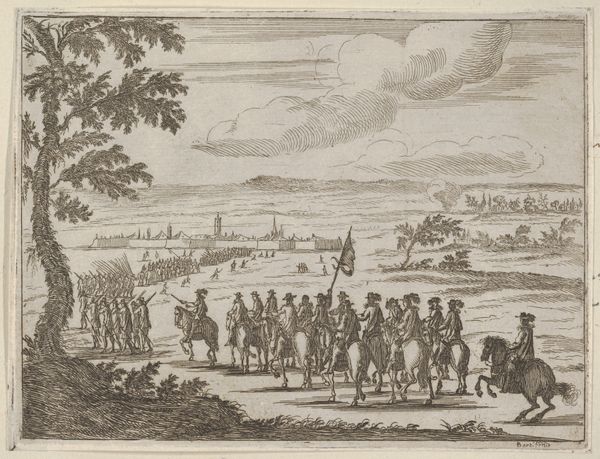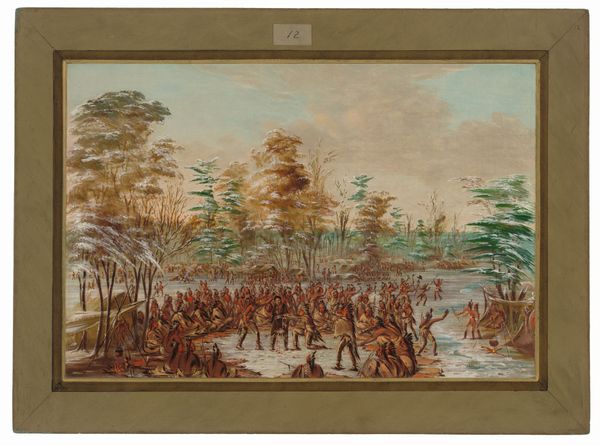
Chief of the Taensa Indians Receiving La Salle. March 20, 1682 1847 - 1848
0:00
0:00
painting, gouache
#
narrative-art
#
painting
#
gouache
#
landscape
#
romanticism
#
history-painting
#
watercolor
Dimensions: overall: 42 x 60.3 cm (16 9/16 x 23 3/4 in.)
Copyright: National Gallery of Art: CC0 1.0
Curator: Looking at George Catlin’s watercolor, “Chief of the Taensa Indians Receiving La Salle. March 20, 1682”, created between 1847 and 1848, I'm immediately struck by its ethnographic character. Editor: Indeed. The composition, the rendering of light across the buildings and the figures, evokes a sense of documentation but it does feel somewhat romanticized, wouldn’t you agree? How does the medium, watercolor, lend to our reading of its production and impact? Curator: It certainly softens what could be a harsher representation of encounter. Catlin’s choice of watercolor allows for quick, portable work, aligning with his travels among Indigenous communities. We need to consider the pigment choices available at that time, and how access to certain colours could indicate trade networks and cultural exchange even within the work’s materiality. What purpose does Catlin achieve, portraying such an exchange for audiences back East? Editor: That's a crucial point. This painting operates on multiple historical levels. First, it depicts La Salle's arrival in the late 17th century, a moment laden with colonial implications. Secondly, it was made in the mid-19th century, as westward expansion gained momentum, justifying dispossession. Consider the act of Catlin’s portraying this as a ceremonial encounter with clean lines. Doesn't that aesthetic gloss sanitize the more brutal reality of that relationship? Curator: Exactly, Catlin attempts to present this as a civil and dignified reception. Note the composition: The chief and La Salle are given equal footing; however, one can't overlook the artist’s labor that goes into this carefully constructed narrative, a commodity circulating within a market eager for depictions of the ‘vanishing’ West. We should note what kinds of patronage Catlin would need to receive and to whose expectations the painting would pander to gain support for further travels and documentation. Editor: The architecture too. What appears as organic village-like scene is purposefully arranged. He wants us to see “order”, thereby furthering the stereotype of benevolent assimilation over the complexities and potential for conflict inherent in such a meeting. It really highlights how art can actively reinforce the socio-political climate. Curator: So true, it forces us to consider how artworks such as these played their part in not just documenting a people, but enabling westward expansion. It's crucial to examine the relationship between the physical objects in the painting—the guns, the robes, and the very canvas—and the power dynamics at play during the moment of its creation. Editor: The materiality and history are very intertwined here. Thinking about it all together really allows us to appreciate the complicated layering of meaning here.
Comments
No comments
Be the first to comment and join the conversation on the ultimate creative platform.
